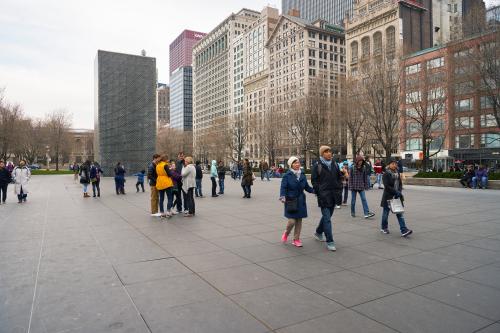New estimates by the Pew Hispanic Center show that unauthorized immigration has slowed over the past few years, not surprisingly, in sync with the slowing U.S. economy and tougher border enforcement strategies. While immigrants still came to the United States over the past few years (or overstayed the legal terms of their visa rendering them illegally present in the United States), others emigrated, some adjusted to a legal status, and others died.
The net effect of these entries and exits between 2007 and 2009 was a 1 million decrease of the population in the U.S. without legal status. According to Pew, this represents the “first significant reversal in the growth of this population over the past two decades.”
Strikingly, no state saw a statistically significant increase in their illegal immigrant population in the two-year period that ended in March 2009. Of course, that was before Arizona passed its stringent law aimed at unauthorized immigrants that has changed the national conversation about the enforcement of immigration policy.
The Pew Hispanic Center estimates show state-level declines between 2008 and 2009.
Nevada saw a significant decline of about 50,000 in the last year, and collectively Arizona, Colorado, and Utah saw a decline of 130,000 unauthorized immigrants.
Florida was the “biggest loser” at a whopping 375,000, bringing the number of unauthorized immigrants well below the estimated 1 million of a year ago. Virginia is the only other state that saw a statistically significant decline in unauthorized immigrants—the 240,000 unauthorized immigrants estimated in 2009 were 65, 000 fewer than the prior year.
Loss of immigrants, particularly the unauthorized, may be the ultimate indicator of economic sluggishness. The fragile economies of most metropolitan areas in the Mountain West states and Florida ranked them at the top of the list for job loss, devalued housing prices, and foreclosures.
As my colleague Bill Frey has demonstrated, this decade has been a migration rollercoaster ride for some states. Nowhere was this more evident than in Florida which led all states with the greatest domestic in-migration rates in the early part of this decade, but between 2008 and 2009 lost more than it gained for the first time in forever. Nevada also saw a migration reversal on a smaller scale after gangbusters growth during the early years of the 2000s.
Thus, the Pew Hispanic Center estimates, because of the time period measured (through March 2009), may not yet have captured the greatest declines in unauthorized immigrants for these states that have seen abrupt u-turns in their overall growth and as enforcement capacity is strengthened at the border.
The only other state with significant unauthorized immigrant population declines was Virginia, a state whose elected officials have taken a strong public stance against illegal immigration. It also saw a mid-decade reversal of domestic growth, starting a bit earlier than Florida’s and Nevada’s.
The declines in illegal immigration to Florida and Virginia stand out for another reason. Among states with large total immigrant populations, they have some of the smallest shares of Mexican immigrants, about 7 percent of their respective state totals. That suggests that other origin groups are substantially making up the unauthorized immigrant population, defying stereotypes. Nationally, the Pew Hispanic estimates show about 60 percent of unauthorized immigrants are Mexican.
The new estimates and trends should provide a moment of reflection as we contemplate both our economic predicament and how best to change our laws and policies around immigration and border enforcement. As the United States recovers from the recession, immigrant flows are likely to increase, including those of immigrants crossing the border illegally and those who might see a fresh opportunity and decide to violate the terms of their visas.



Commentary
Unauthorized Immigration’s Recession Pause
September 2, 2010